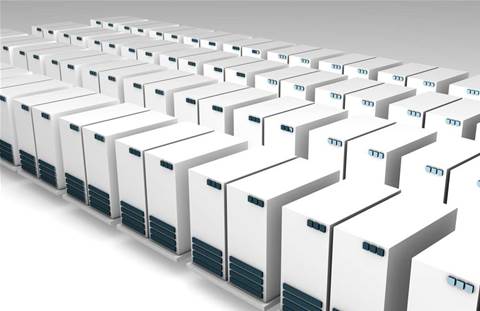Cisco claims improvements of a fifth to a third in networking and half in processing performance. Cisco’s
channel has a cut-throat reputation and the expansion into servers has accreted more resellers and how many products they sell. But it handles conflict “no differently to how Cisco operates normally”, says Morison.
He says at Cisco there has been consolidation, such as the merger of NTT and Frontline, and Cisco has a purely channel model and doesn’t compete with its partners in managed services or outsourcing.
“We’re out there competing against our competitors who are competing with systems integrators,” Morison says.
IBM Netezza ‘just like iPod’
IBM has also bought appliance vendors to bolster its position in the return to the mainframe. Witness its steps to challenge the data warehouse market when it bought Netezza. It has one job – to simplify the data warehouse, says IBM account executive Roger Walker.
A data warehouse has a database, processors, operating system, disk drives and communications. The Netezza replaces it with an appliance that he says “is just like an iPod”.
“You don’t need to know what operating system it’s running," Walker says.
“If you’re looking at a warehouse that needs to be mission-critical then you need a system that’s designed to be self-regulating and healing. That’s what our bottom-level system is designed to do.”
The entry Netezza Twinfin is “a few hundred thousand dollars”, Walker says and the average price is in the millions of dollars.
But it may save customers millions of dollars in integration, Walker says. Costs for a data-warehouse project include the hardware, software and implementation.
The difference with data warehouses is in the complexity of the back-end and front-end interfaces. The back-end collects data to be verified before it comes into the warehouse and the front-end displays it through queries made using business-intelligence tools.
“The nice thing about Netezza is that you’d spend a lot of the budget on that middle aspect (integration) but now you can simplify that and bring the cost down,” Walker says.
“In the old days, you’d be talking tens of millions of dollars. Now there’s more room for resellers to get the front and back-end right and deliver better outcomes to customers.”
“We have examples where people have literally had the appliance arrive in the afternoon, we put it together, run diagnostics and then hand it over in the morning and it’s ready to go to load data.”







_(11).jpg&h=142&w=230&c=1&s=1)




.jpg&w=100&c=1&s=0)
_(8).jpg&w=100&c=1&s=0)









